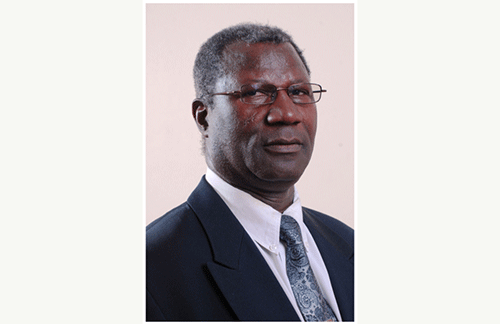The Consultative Group on International Agricultural Research (CGIAR) research program on climate change, Agriculture and Food Security (CCAFS) is working with communities to develop ’Climate-Smart Villages’.
These are sites where researchers, local partners, and farmers collaborate to evaluate and maximise synergies across a portfolio of climate-smart agricultural interventions. The main purpose is to improve farmers’ income and resilience to climatic risks and boost their ability to adapt to climate change. Although global food production has substantially increased in the past few decades, the Millennium Development Goal that aims to halve the proportion of people who suffer from hunger between 1990 and 2015 appears to be beyond reach.
Nearly 870 million people still live in hunger today, most of them in South Asia and Sub-Saharan Africa. These highly populated regions with widespread poverty, have large areas under low agricultural productivity. They are prone to high climatic stresses, which further compound the problem. These are regions that have been identified as climate change ‘hotspots’.
Global food production must double by 2050 to match population and income growth and much of this must happen in Asia and Africa. But even as food insecurity has increased in several regions because of competing claims for land, water, labour and capital, the need of the hour is to improve production per unit of land and water, as these resources are shrinking. Sustainably increasing agricultural productivity is therefore central to the future of global food security and the realisation of the Millennium Development Goals.
Now is the time for action, as practices to adapt agriculture to climatic risks take time to root and become effective. Strategies that enhance climate-smart agriculture are the most appropriate starting point for sustainable agriculture. In Southern Africa, USAID has taken a step toward climate-smart development by creating a network of resilience villages to serve as training hubs to help communities adapt to climate change. In partnership with the Southern Africa Wildlife College (SAWC), and building on the college’s reputation as a leading provider of training for conservation in the region, four training hubs have been established. The hubs consist of three to five villages each, with surrounding populations of 1 000-15 000.
Men, women and youth participate, with sessions consisting of roughly 40-60 people. The hubs are places already established by either the community or local NGO and serve as a community meeting place. Taking advantage of existing structures, the resilience village provides resources and hands-on training to build skills aimed at reducing vulnerability to the impacts of climate change. These villages then serve as hubs to disseminate ideas and innovations to vulnerable communities, which in turn test these concepts and spread them into other communities.
As a result of participating in resilience village discussions, communities have created governance dashboards to gauge their progress toward good governance and smart decision-making. The impact of climate change is already being seen in Southern Africa, which includes Angola, Botswana, Lesotho, Malawi, Mozambique, Namibia, Swaziland, South Africa, Zambia and Zimbabwe. The region is highly vulnerable to the negative effects of climate change, which are predicted to include warmer climatic conditions, lower precipitation in spring and summer, and higher precipitation in winter. Climate change is also likely to increase the incidence of extreme weather events such as droughts and floods, resulting in soil erosion, land degradation, decreased soil fertility and water stress.
This will have serious implications for farming and significantly impact the livelihoods and food security of the vulnerable, particularly rural communities. In a region where many areas are already water insecure and heavily dependent on rain-fed agriculture or nature-based tourism, there is a need to safeguard hard-won development gains by building an understanding of climate change impacts and implementing appropriate response measures. “Introducing adaptation concepts to communities can be challenging,’’ said Doreen Robinson, USAID senior regional environment adviser.
“We live in a world with so much information, and where the climate change message is often too technical, complicated and easily influenced by the cultural, social and political environment. USAID is committed to breaking these barriers to get good, relevant, understandable and timely climate information to people to help them change their lives for the better.’’
In recent years, agricultural productivity has increased throughout sub-Saharan Africa and within southern Africa in particular. But most of the growth has come from bringing previously uncultivated land into production, rather than from intensification made possible by technical change (increased input efficiency). Comparisons of total factor productivity growth have shown that during the past decade, technical change accounted for a larger share of agricultural productivity growth in Asia and Latin America, compared to Africa.
To fulfil agriculture’s potential in southern Africa, investments in agricultural research and development are needed. Despite the confirmed returns to investments in agricultural research and development, agricultural research in Africa is particularly underfunded.
In southern Africa where groups of countries share similar agro-ecological zones and farming systems, there is a potential for finding shared solutions to common problems. Climate-smart agriculture is an alternative approach to managing land sustainably while increasing agricultural productivity. One of the great strengths of the climate-smart community approach is its inclusiveness in bringing together farmers, policymakers, scientists and local organisations to work on a portfolio of practices to adapt agriculture to climate change.
Initial testimonies from farmers indicate exiting opportunities to scale out the climate-smart community model in a number of communities in different regions. Integrating the model into existing or proposed government policies can ensure the food and livelihood security of millions of farmers living in regions vulnerable to climate change.


